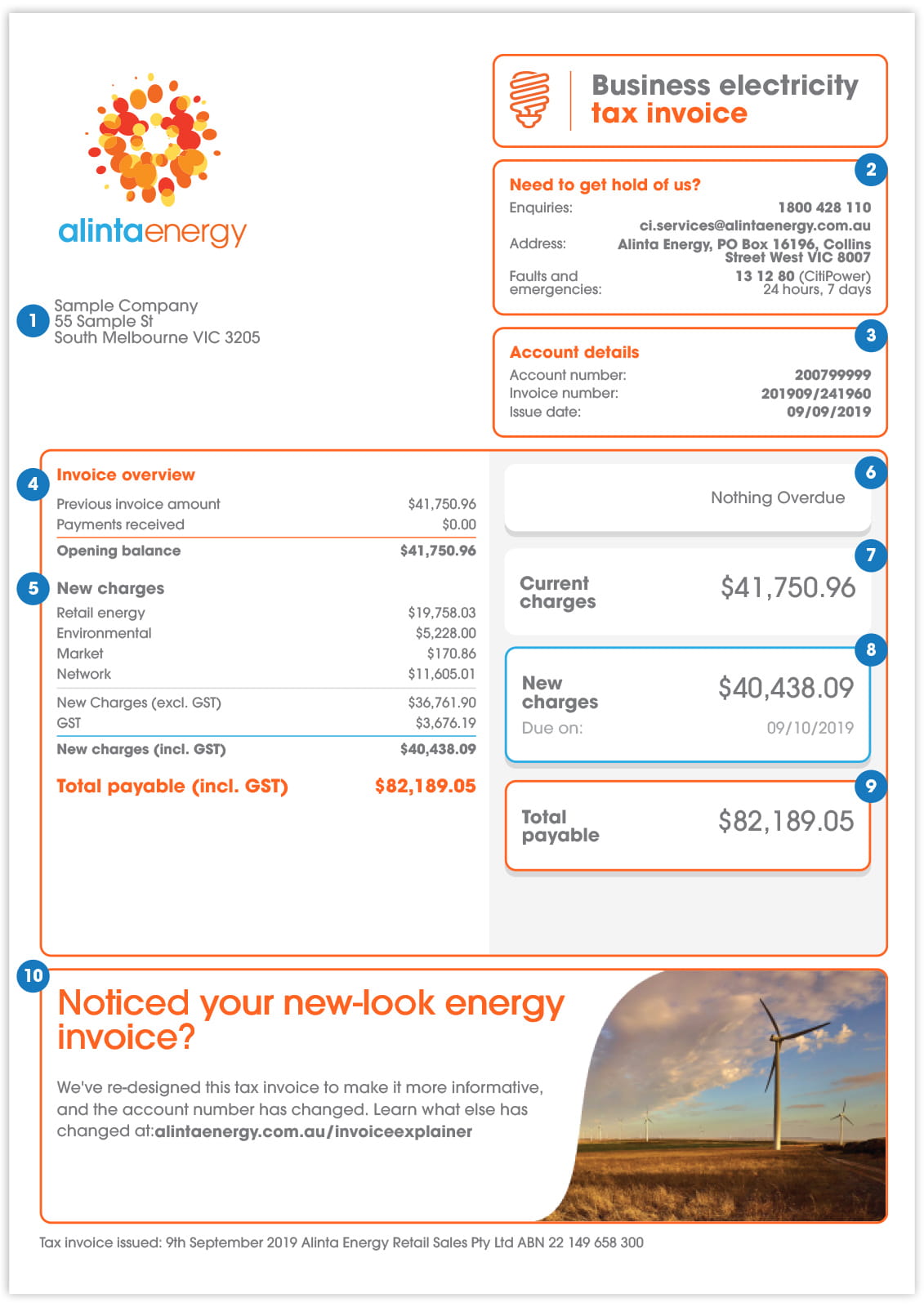
How to read your bill
Need help understanding your bill? Here's everything you need to know to help manage your energy plan.
We get it. Cost of living is rising, and we’re all looking for ways to cut expenses. One good place to start? Understanding your energy bill.
Your bill contains a lot of information. Be honest, though – if you’re like most of us, you’ll zero in on the amount you need to pay and the due date, and leave it at that.
But properly understanding your current plan and your energy consumption can help to put you in control. Here’s what to look for.
If you’re in WA, head to this article to better understand your gas bill.
Activate MyAccount to track your day-to-day energy usage and much more. Register or log in. You can also download the Alinta Energy app to access your account whenever you need.
Your energy usage is based on an actual or estimated meter read. If we can’t access your meter – there might be a dog on the premises, or entry is blocked – you’ll receive an estimated reading.
It’s why you’ll see the word 'estimate' rather than 'actual' on your bill. The estimate is based on your previous energy usage.
If your bill is higher than usual, it could mean something’s changed in your household. Did you buy a new appliance? Or hold a large party? Winter (more heater use) and summer (constantly running the air-conditioning) can also affect the amount of energy you use.
Still think something isn't right? Estimated readings aren’t 100 per cent accurate so feel free to submit a self meter read.
Your bill has two different charges: usage and supply. In most cases, your usage costs plus the supply charge make up your total balance for that billing cycle.
Your usage charge is the amount you pay per unit of energy, which is based on your tariff. (More on that below.) It’s usually listed as cents per kilowatt hour (c/kWh) for electricity and cents per megajoule (c/MJ) for gas.
There’s also the supply charge (aka the ‘daily charge’) – that’s the cost of maintaining the infrastructure that connects energy to your home. You pay this charge even if you didn’t use any energy during that billing cycle.
Two main factors influence your usage costs: your tariff – which is your rate structure and how you are charged – and the amount of energy you use.
There are four types of tariffs:
Your electricity usage is measured in kilowatt hours (kWh), which is equivalent to the amount of energy an appliance uses in an hour.
An example? If you run a 1000-watt heater for an hour, it will consume 1 kWh. If you’re on a single-rate tariff and your usage charge is 22.56 cents per kilowatt, your heater will cost 22.56 cents for that hour. If you run the heater for eight hours, it will use 8 kwH and the cost will be $1.85.
But if you’re on a time-of-use tariff, the charge for the heater will change during the day. It means you’ll have different rates for
Looking to cut costs? Your usage could be the key. Check out your consumption patterns, learn about your tariff, then look for ways you can cut back or change what you’re doing – our Energy Saving Tips and Tariffs Explained articles have great advice to get you started.
Your bill has a simple graph that compares your current energy usage to previous months, and to the same time last year. We’ll also show you how your energy use compares to an average household, as well as your greenhouse gas emissions. For smart meter customers, you’ll find more information in MyAccount. Here you can see a monthly and daily view of your usage, which is updated 48 hours after the electricity has been used.
These small stats can have a big impact. They can help you work out the trends in your energy use. They can help you budget for your next bill. And they can help you avoid bill shock.
To get the best deal, you need an energy plan that fits your needs and your lifestyle. It's why we tell you what plan you're currently on and if it has any cost-saving benefits.
Your bill will state if you’d be better off on a different plan, too. Our plans don’t have lock-in contracts or exit fees, so it’s easy to make the switch.
You can also compare plans from Alinta Energy by heading to our homepage and choosing from the menu under 'How can we help you today?'.
Concession eligibility. Set-and-forget direct debit. Interpreter services. Your bill lists all of these.
Importantly, you'll also find information on what to do if you find yourself in a tough spot. If it's getting harder to pay your bill in full each month, we're here to help.
Learning to read your energy bill is an underrated life skill. It can help you stay on top of your budget. And it can help you make smart changes to your energy use. That’s good for your wallet – and good for the planet.
More information about energy bills and how you're charged can be found on the Australian Government website.